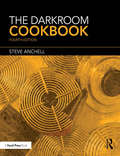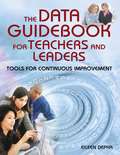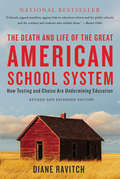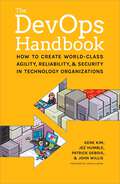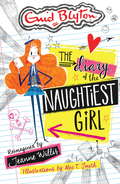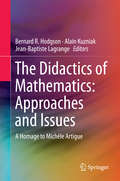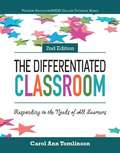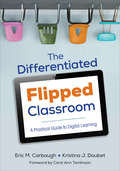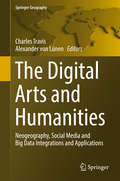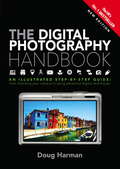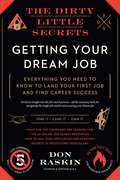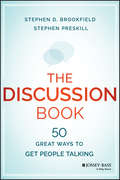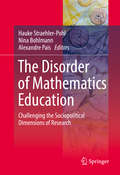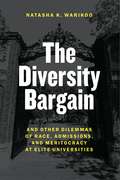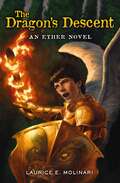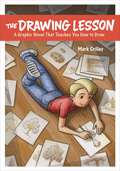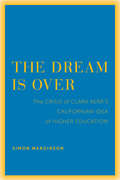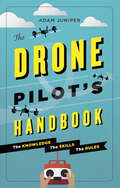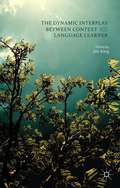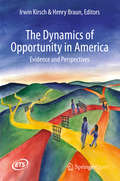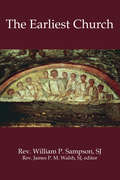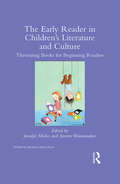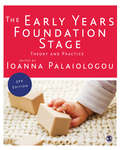- Table View
- List View
The Darkroom Cookbook (Darkroom Cookbook Ser. #Vol. 2)
by Steve AnchellThis is the classic guide for analog photography enthusiasts interested in high-quality darkroom work. The fourth edition from darkroom master Steve Anchell is packed with techniques for silver-based processing. In addition to "recipes" for darkroom experiments, this book contains invaluable information on developers, push-processing, reversal processing, enlarged negatives, pyro formulas, printing, and toning prints. The Darkroom Cookbook also offers advice about where to get darkroom equipment, how to set up a darkroom, safe darkroom working spaces, and more. Key features of this revised edition include: Over 200 step-by-step or do-it-yourself formulas Tips for mastering the "ingredients" of analog photography processing, namely the chemicals used to develop, fix, stop and tone Special technique contributions and stunning black and white imagery by professionals such as Bruce Barnbaum, Tim Rudman, John Sexton, and more.
The Data Guidebook for Teachers and Leaders: Tools for Continuous Improvement
by Eileen DepkaAre you looking for new ways to use data in the decision-making process? Are you seeking tools that provide better flow-through from data to improved student achievement? Have you ever considered including students in the data-to-improvement cycle? Schools recognize that data is an essential decision-making tool, but it requires teamwork and reflection to reap the maximum benefits. This guidebook offers practical collection and analysis methods and templates as well as tips for building trust and working together.
The Death and Life of the Great American School System: How Testing and Choice Are Undermining Education
by Diane RavitchA passionate plea to preserve and renew public education, The Death and Life of the Great American School System is a radical change of heart from one of America’s best-known education experts. Diane Ravitch—former assistant secretary of education and a leader in the drive to create a national curriculum—examines her career in education reform and repudiates positions that she once staunchly advocated. Drawing on over forty years of research and experience, Ravitch critiques today’s most popular ideas for restructuring schools, including privatization, standardized testing, punitive accountability, and the feckless multiplication of charter schools. She shows conclusively why the business model is not an appropriate way to improve schools. Using examples from major cities like New York, Philadelphia, Chicago, Denver, and San Diego, Ravitch makes the case that public education today is in peril. Ravitch includes clear prescriptions for improving America’s schools:leave decisions about schools to educators, not politicians or businessmendevise a truly national curriculum that sets out what children in every grade should be learningexpect charter schools to educate the kids who need help the most, not to compete with public schoolspay teachers a fair wage for their work, not “merit pay” based on deeply flawed and unreliable test scoresencourage family involvement in education from an early ageThe Death and Life of the Great American School System is more than just an analysis of the state of play of the American education system. It is a must-read for any stakeholder in the future of American schooling.
The DevOps Handbook: How to Create World-Class Agility, Reliability, and Security in Technology Organizations
by Jez Humble John Willis Gene Kim Patrick DeboisIncrease profitability, elevate work culture, and exceed productivity goals through DevOps practices.More than ever, the effective management of technology is critical for business competitiveness. For decades, technology leaders have struggled to balance agility, reliability, and security. The consequences of failure have never been greater—whether it's the healthcare.gov debacle, cardholder data breaches, or missing the boat with Big Data in the cloud.And yet, high performers using DevOps principles, such as Google, Amazon, Facebook, Etsy, and Netflix, are routinely and reliably deploying code into production hundreds, or even thousands, of times per day.Following in the footsteps of The Phoenix Project, The DevOps Handbook shows leaders how to replicate these incredible outcomes, by showing how to integrate Product Management, Development, QA, IT Operations, and Information Security to elevate your company and win in the marketplace.
The Diary of the Naughtiest Girl
by Jeanne Willis Alex T SmithInspired by Enid Blyton's bestselling school series The Naughtiest Girl - this is the hilarious diary of the naughtiest pupil there's ever been. Fans of Tom Gates will love this!'Mum says pupils aren't allowed to take mobile devices to Whyteleafe ... excuse me? It's the twenty-first century! What next? Ride to school on a penny-farthing?'When Elizabeth Allen is packed off to boarding school, armed with nothing but a journal to write in for entertainment, she is NOT impressed. How will she survive without her home comforts, especially her pony Ross (the only boy she has ever truly loved)? Elizabeth comes up with a cunning plan: she will be so naughty that she gets sent home . . . But then Elizabeth discovers a love for music and makes her first ever friend ... perhaps school life might not be as bad as she thought?The Diary of the Naughtiest Girl is written by bestselling author Jeanne Willis and illustrated by Alex T. Smith, acclaimed creator of the Claude books.
The Didactics of Mathematics: Approaches and Issues
by Jean-Baptiste Lagrange Bernard R. Hodgson Alain KuzniakThis book, the outcome of a conference organised in 2012 in Paris as a homage to Michèle Artigue, is based on its main components. However, it offers more than a mere reflection of this event in itself, as various well-known researchers from the field have been invited to summarize the main topics where the importance of Artigue's contribution is unquestionable. Her multiple interest areas, as a researcher involved in a wider community, give to this volume its unique flavour of diversity. Michèle Artigue (ICMI 2013 Felix Klein Award, CIAEM 2015 Luis Santaló Award) is without doubt one of the most influential researchers nowadays in the field of didactics of mathematics. This influence rests both on the quality of her research and on her constant contribution, since the early 1970s, to the development of the teaching and learning of mathematics. Observing her exemplary professional history, one can witness the emergence, the development, and the main issues of didactics of mathematics as a specific research field.
The Differentiated Classroom: Responding to the needs of All Learners
by Carol Ann Tomlinson The ASCDThis book's insightful guidance on what to differentiate, how to differentiate, and why lays the groundwork for bringing differentiated instruction into your own classroom or refining the work you already do to help each of your wonderfully unique learners move toward greater knowledge, more advanced skills, and expanded understanding.
The Differentiated Flipped Classroom: A Practical Guide to Digital Learning (Corwin Teaching Essentials)
by Eric M. Carbaugh Kristina J. DoubetEnsure personalized student learning with this breakthrough approach to the Flipped Classroom! In the flipped classroom, students need to do more than simply re-watch a video to learn effectively. This groundbreaking guide helps you identify and address diverse student needs within the flipped classroom environment. You will find practical, standards-aligned solutions to help you design and implement carefully planned at-home and at-school learning experiences, all while checking for individual student understanding. Learn to differentiate learning for all students with structured, research-based best practices to help you: Integrate Flipped Learning and Differentiated Instruction Use technology as a meaningful learning tool Implement flexible planning and grouping Proactively use ongoing formative assessments Adjust instruction to support, challenge, and motivate diverse learners Manage the Differentiated Flipped classroom Includes practical examples and a resource-rich appendix. Make your flipped classroom a true place of learning with this go-to guide! "The expectations for teaching in today’s world are steadily increasing. Students expect their teachers to use technology in instruction. Parents and administrators expect teachers to differentiate instruction to reach every student. In this book you will learn how both models can work in concert. Even more importantly you will learn many practical strategies that will allow you to meaningfully differentiate your instruction while flipping your classroom, allowing you the greatest potential to reach all of your students." —David A. Slykhuis, PhD, President of SITE (The Society for Information Technology and Teacher Education)
The Differentiated Flipped Classroom: A Practical Guide to Digital Learning (Corwin Teaching Essentials)
by Eric M. Carbaugh Kristina J. DoubetEnsure personalized student learning with this breakthrough approach to the Flipped Classroom! In the flipped classroom, students need to do more than simply re-watch a video to learn effectively. This groundbreaking guide helps you identify and address diverse student needs within the flipped classroom environment. You will find practical, standards-aligned solutions to help you design and implement carefully planned at-home and at-school learning experiences, all while checking for individual student understanding. Learn to differentiate learning for all students with structured, research-based best practices to help you: Integrate Flipped Learning and Differentiated Instruction Use technology as a meaningful learning tool Implement flexible planning and grouping Proactively use ongoing formative assessments Adjust instruction to support, challenge, and motivate diverse learners Manage the Differentiated Flipped classroom Includes practical examples and a resource-rich appendix. Make your flipped classroom a true place of learning with this go-to guide! "The expectations for teaching in today’s world are steadily increasing. Students expect their teachers to use technology in instruction. Parents and administrators expect teachers to differentiate instruction to reach every student. In this book you will learn how both models can work in concert. Even more importantly you will learn many practical strategies that will allow you to meaningfully differentiate your instruction while flipping your classroom, allowing you the greatest potential to reach all of your students." —David A. Slykhuis, PhD, President of SITE (The Society for Information Technology and Teacher Education)
The Digital Arts and Humanities
by Alexander Von Lünen Charles TravisThe case studies in this book illuminate how arts and humanities tropes can aid in contextualizing Digital Arts and Humanities, Neogeographic and Social Media activity and data through the creation interpretive schemas to study interactions between visualizations, language, human behaviour, time and place.
The Digital Photography Handbook: An Illustrated Step-by-step Guide
by Doug HarmanNeed to know which digital camera to buy? Want to take better photographs and retouch images? Ready to achieve professional results? This updated edition of The Digital Photography Handbook will allow you to make the most of all the advantages your camera has to offer - as well as guiding you through the latest software to enhance your images, and get professional results with every shot. This book includes expert advice on the art of photography (composition, depth of field and how to photograph a variety of subjects), editing and image manipulation software, how to print your images for the best results, developing a portfolio and mastering the rules of copyright. Doug Harman includes the very latest developments in digital technology, equipping you with everything you need to become a photographer. Contents include: Types of camera, Computers and software, Memory, Pixels and magnification, Saving images, Exposure, Composition, Light, Camera modes, Special effects, Manipulating images, Photo apps, Retouching old photos, Printing digital images, Selecting printers and paper, Archiving and the cloud, Making money from your images, Copyright rules and more.
The Dirty Little Secrets of Getting Your Dream Job
by Don RaskinDrawing on his extensive experience evaluating applicants for his marketing agency, and featuring stories based on real-life situations, sample cover letters, resumes, and straightforward advice, Don Raskin's The Dirty Little Secrets of Getting Your Dream Job offers all the necessary tools for navigating the tough job market and securing your dream job.Don Raskin owns and operates MME, an advertising and marketing agency in New York City. During his twenty-five years at the agency he has interviewed hundreds of new college graduates for positions within his agency and has placed a strong emphasis on entry-level recruitment for positions in creative, account management, traffic, and production. Raskin has also mentored countless students and their parents on best practices for the job search. Over the years, Raskin has kept exceptionally detailed notes on the interviews he has conducted, observing the good, the bad, the ridiculous, the irreverent. He also has a treasure trove of over-the-top cover letters, resumes, interviews, and post interview follow-ups he has conducted and received. Now, he wants to share all the wisdom and insider secrets he has gathered to help students and first-time job seekers find a job in this economy. Based on his remarkable expertise, Raskin's book provides exclusive insight into the job search process and lets readers in on all of the dirty little secrets to landing their first job--or a new one--and finding career success.
The Discussion Book
by Stephen D. Brookfield Stephen PreskillBuild teams, make better decisions, energize groups, and think out of the box Do you need a resource that you can pull out of your pocket to liven up meetings, trainings, professional development, and teaching? The fifty easily applied techniques in this timely manual spur creativity, stimulate energy, keep groups focused, and increase participation. Whether you're teaching classes, facilitating employee training, leading organizational or community meetings, furthering staff and professional development, guiding town halls, or working with congregations, The Discussion Book is your go-to guide for improving any group process. Each of the concrete techniques and exercises is clearly described with guidance on selection and implementation, as well as advice on which pitfalls to avoid. All of the techniques: Offer new ways to engage people and energize groups Get employees, students, colleagues, constituents, and community members to participate more fully in deliberative decision-making Encourage creativity and openness to new perspectives Increase collaboration and build cohesive teams Keep groups focused on important topics and hard-to-address issues Derived from the authors' decades of experience using these exercises with schools, colleges, corporations, the military, social movements, health care organizations, prisons, unions, non-profits, and elsewhere, The Discussion Book will help you guide discussions that matter.
The Disorder of Mathematics Education
by Hauke Straehler-Pohl Nina Bohlmann Alexandre PaisResearch within a socio-political paradigm or "turn" has been gradually recognized and institutionalized as an important part of mathematics education. This book focuses on the neglected problems, tensions and contradictions evoked by this process. The authors do this by challenging current regimes of truth about mathematics education; by identifying how recent technological developments challenge or suspend contemporary conceptions of mathematics education; by critiquing the ideological entanglement of mathematics, its education and schooling with capitalism; by self-reflective analyses of researchers' impacts on shaping what is and can be perceived as the practice of mathematics education (research); and by confronting main-stream mathematics education with socio-political contexts that are usually neglected. In this way, "mathematical rationality" becomes contextualized within contemporary society, where it reproduces itself through technologies, social practices, media and other spheres of social life.
The Diversity Bargain: And Other Dilemmas of Race, Admissions, and Meritocracy at Elite Universities
by Natasha K. WarikooWe’ve heard plenty from politicians and experts on affirmative action and higher education, about how universities should intervene—if at all—to ensure a diverse but deserving student population. But what about those for whom these issues matter the most? In this book, Natasha K. Warikoo deeply explores how students themselves think about merit and race at a uniquely pivotal moment: after they have just won the most competitive game of their lives and gained admittance to one of the world’s top universities. What Warikoo uncovers—talking with both white students and students of color at Harvard, Brown, and Oxford—is absolutely illuminating; and some of it is positively shocking. As she shows, many elite white students understand the value of diversity abstractly, but they ignore the real problems that racial inequality causes and that diversity programs are meant to solve. They stand in fear of being labeled a racist, but they are quick to call foul should a diversity program appear at all to hamper their own chances for advancement. The most troubling result of this ambivalence is what she calls the “diversity bargain,” in which white students reluctantly agree with affirmative action as long as it benefits them by providing a diverse learning environment—racial diversity, in this way, is a commodity, a selling point on a brochure. And as Warikoo shows, universities play a big part in creating these situations. The way they talk about race on campus and the kinds of diversity programs they offer have a huge impact on student attitudes, shaping them either toward ambivalence or, in better cases, toward more productive and considerate understandings of racial difference. Ultimately, this book demonstrates just how slippery the notions of race, merit, and privilege can be. In doing so, it asks important questions not just about college admissions but what the elite students who have succeeded at it—who will be the world’s future leaders—will do with the social inequalities of the wider world.
The Dragon's Descent (An Ether Novel)
by Laurice Elehwany MolinariEverything Vero has trained for in the Ether has led to this. In the third and final book of Laurice E. Molinari’s Ether series, the young guardian angel Vero is given the quest of locating the Book of Raziel—which was lost when Adam was forced to leave the garden of Eden. And not even Raziel himself knows where the book is now. It soon becomes clear, however, that Lucifer is intent on finding the book for his own means. When the C.A.N.D.L.E. library in the Ether is missing the information he needs, Vero, his sister, and his best friend, Tack, discover the clues to the book’s whereabouts may be right in front of them on Earth—and that Vero’s father’s new assignment in Sri Lanka may be no coincidence. As their quest begins in earnest, the lines between good and evil begin to blur. Vero will need to use every ounce of his training to take on not only the Devil and his hordes, but also Lilith, who may be lurking closer than anyone thinks.
The Drawing Lesson: A Graphic Novel That Teaches You How to Draw
by Mark CrilleyRead This Comic and Start Drawing Today! Nominated for a 2017 Eisner AwardFor the first time ever, drawing instructor and graphic novelist Mark Crilley brings his easy-to-follow artistic instruction to aspiring artists in the form of a comic book, providing you with a one-of-a-kind how-to experience. In The Drawing Lesson, you&’ll meet David—a young boy who wants nothing more than to learn how to draw. Luckily for David, he&’s just met Becky—his helpful drawing mentor. Page by page, Becky teaches David (and you!) about the essential fundamentals that artists need in order to master drawing, all in a unique visual format. In panel after panel, Crilley provides lessons on shading, negative space, creating compositions, and more, with accompanying exercises that you can try for yourself. Are you ready to start your drawing lesson today?
The Dream Is Over: The Crisis of Clark Kerr's California Idea of Higher Education (The Clark Kerr Lectures On the Role of Higher Education in Society #4)
by Simon MarginsonAt publication date, a free ebook version of this title will be available through Luminos, University of California Press's new open access publishing program. Visit www.luminosoa.org to learn more. TheDreamIsOver tells the extraordinary story of the 1960 Master Plan for Higher Education in California, created by visionary University of California President Clark Kerr and his contemporaries. The Master Plan's equality of opportunity policy brought college within reach of millions of American families for the first time and fashioned the world's leading system of public research universities. The California idea became the leading model for higher education across the world and has had great influence in the rapid growth of universities in China and East Asia. Yet, remarkably, the political conditions supporting the California idea in California itself have evaporated. Universal access is faltering, public tuition is rising, the great research universities face new challenges, and educational participation in California, once the national leader, lags far behind. Can the social values embodied in Kerr's vision be renewed?
The Drone Pilot's Handbook
by Adam JuniperThe perfect companion for anyone buying (or thinking of buying) a drone, whether it's just for fun, to race against friends, or to give their to give their photography a whole new angle.The Drone Pilot's Handbook gives you the skills and techniques you need to fly and maintain your multicopter drone, tips for tuning it for maximum performance, and - importantly - a clear graphical guide to where the law will and won't allow you to fly. Meanwhile, spectacular aerial photography from around the world will inspire you to get airborne immediately!Occasional boxouts provide safety tips, handy ideas, and URLs, and flying instructions are presented with attractive original illustrations. This clean approach that makes a welcome contrast to ugly online forums, or the PDFs that drone manufacturers provide, and will have you up and away in no time.
The Dynamic Interplay between Context and the Language Learner
by Jim KingThis edited volume offers a series of state-of-the-art conceptual papers and empirical research studies which consider how contextual factors at multiple levels dynamically interact with individuals to influence how they go about the complex business of learning and using a second language.
The Dynamics of Opportunity in America
by Irwin Kirsch Henry BraunAcross the country, our children are beginning life from very different starting points. Some have aspirations and believe they can be achieved. For too many others, aspirations are tempered, if not dashed, by the sobering realities of everyday life. These different starting points place children on distinctly different trajectories of growth and development, ultimately leading to vastly different adult outcomes. How did we get to a place where circumstances of birth have become so determinative? And what must we do, within communities and across our country, to better equalize opportunity for more Americans - both young and old? The editors of this volume contend that if, as a nation, we do nothing, then we will continue to drift apart, placing an unsustainable strain on the nation's social fabric and the character of its democracy. Consequently, understanding the dynamics governing the distribution and transmission of opportunity - and transforming this understanding into policies and programs - is critical for not only the life outcomes of individual Americans and their children, but also the country as a whole. The goal of Educational Testing Service's Opportunity in America initiative is to explore these powerful dynamics and to describe and convey them in a way that advances the national conversation about why we must take action - and how best to do so. This volume contains 13 chapters and an epilogue written by leaders from a range of fields including education, economics, demography, and political science. Collectively, they not only illuminate key aspects of the problem but also offer suggestions of what policies, programs, and changes in practices could begin to reverse the trends we are seeing. Written in an engaging style, this volume constitutes an essential foundation for informed discussion and strategic analysis.
The Earliest Church
by William P. Sampson“Exciting reading for anyone who wants to experience the initial development of Christianity as the work of humans essentially just like us.” —David Goldfrank, Professor of History, Georgetown University This book brings to life the lived experience of the disciples after Christ’s death, the possibilities they faced, and the choices they made—and how these all shaped the direction the Church would take. “In The Earliest Church, the late Rev. William P. Sampson, SJ, takes us on a journey of imagination, spirit, and theological contemplation. By helping us to explore the earliest days of the Church, he guides us into a deeper understanding of our Church in the present day. Just as Fr. Sampson guided so many on spiritual retreats, this book continues his legacy of scholarship, reflection, and helping others to most authentically live their faith.” —John J. DeGioia, President, Georgetown University “Applies a unique combination of historical and exegetical imagination and scholarly rigor to reconstruct the hypothetical journey of the direct and indirect disciples of Jesus from their considering him to have been an extraordinary man to their envisioning him also as God.” —David Goldfrank, Professor of History, Georgetown University “A fascinating exploration of how the religious experience continues to open up new insights into the past and the meaning of the Christian perspective. It provides a new analysis for readers seeking to know the history and contemporary unfolding of Christianity as seen in the early development of the church.” —Dr. Ronald Johnson, Professor Emeritus of History, Georgetown University
The Early Reader in Children's Literature and Culture: Theorizing Books for Beginning Readers (Children's Literature and Culture)
by Jennifer Miskec Annette WannamakerThis is the first volume to consider the popular literary category of Early Readers – books written and designed for children who are just beginning to read independently. It argues that Early Readers deserve more scholarly attention and careful thought because they are, for many younger readers, their first opportunity to engage with a work of literature on their own, to feel a sense of mastery over a text, and to experience pleasure from the act of reading independently. Using interdisciplinary approaches that draw upon and synthesize research being done in education, child psychology, sociology, cultural studies, and children’s literature, the volume visits Early Readers from a variety of angles: as teaching tools; as cultural artifacts that shape cultural and individual subjectivity; as mass produced products sold to a niche market of parents, educators, and young children; and as aesthetic objects, works of literature and art with specific conventions. Examining the reasons such books are so popular with young readers, as well as the reasons that some adults challenge and censor them, the volume considers the ways Early Readers contribute to the construction of younger children as readers, thinkers, consumers, and as gendered, raced, classed subjects. It also addresses children’s texts that have been translated and sold around the globe, examining them as part of an increasingly transnational children’s media culture that may add to or supplant regional, ethnic, and national children’s literatures and cultures. While this collection focuses mostly on books written in English and often aimed at children living in the US, it is important to acknowledge that these Early Readers are a major US cultural export, influencing the reading habits and development of children across the globe.
The Early Years Foundation Stage: Theory and Practice
by Ioanna PalaiologouThe new edition of this bestselling textbook continues to provide comprehensive coverage of the revised Early Years Foundation Stage (EYFS) curriculum, and is the ideal companion for anyone undertaking any Early Years or Early Childhood Studies course, or those working towards Early Years Teacher Status (EYTS). The third edition now includes new chapters on; · International Perspectives on Early childhood Education and Care · The Issue of Professionalism · Pedagogical Documentation · Using the Outdoor Environments in Early childhood Pedagogy · The Role of Digital Technologies in the Early Years This book further supports your study with outstanding learning features including; · A Companion Website with weblinks, free SAGE journal articles, extended case studies and annotated further readings. · Chapter Roadmaps to identify what each chapter will cover at-a-glance. · Case Studies in each chapter to help you link theory to practice · 'Reflection Points', 'Reflective Tasks' and 'Points for Discussion', to help you critically reflect on how the chapter can be applied to your personal and professional development. · Further Readings directing you to external resources to help deepen your understanding
The Early Years Foundation Stage: Theory and Practice
by Ioanna PalaiologouThe new edition of this bestselling textbook continues to provide comprehensive coverage of the revised Early Years Foundation Stage (EYFS) curriculum, and is the ideal companion for anyone undertaking any Early Years or Early Childhood Studies course, or those working towards Early Years Teacher Status (EYTS). The third edition now includes new chapters on; · International Perspectives on Early childhood Education and Care · The Issue of Professionalism · Pedagogical Documentation · Using the Outdoor Environments in Early childhood Pedagogy · The Role of Digital Technologies in the Early Years This book further supports your study with outstanding learning features including; · A Companion Website with weblinks, free SAGE journal articles, extended case studies and annotated further readings. · Chapter Roadmaps to identify what each chapter will cover at-a-glance. · Case Studies in each chapter to help you link theory to practice · ‘Reflection Points’, ‘Reflective Tasks’ and ‘Points for Discussion’, to help you critically reflect on how the chapter can be applied to your personal and professional development. · Further Readings directing you to external resources to help deepen your understanding ? Ioanna Palaiologou will be discussing key ideas from The Early Years Foundation Stage in the SAGE Early Years Masterclass, a free professional development experience hosted by Kathy Brodie. To sign up, or for more information, click here.
